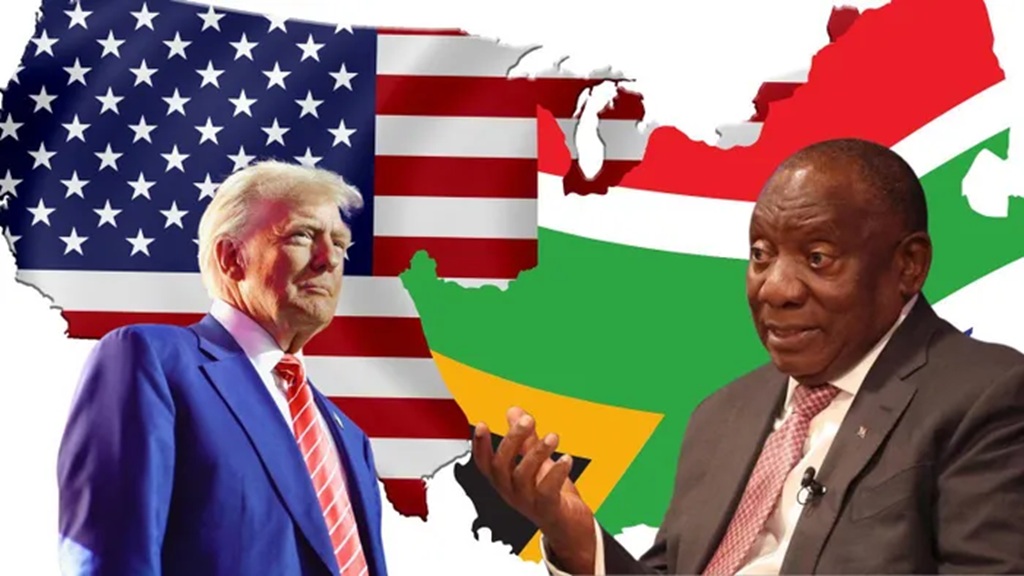News
Coface Risk Review 2025: The Great Leap Backwards

TAIWAN– With global tensions and uncertain trade policies, the world economy faces challenges between a likely slowdown and the risk of further shocks Colface reports. Decisions on tariffs by the Trump administration and ongoing conflict in the Middle East are shaping what could be an unpredictable economic climate for 2025 and 2026.
In response to these conditions and current measures, Coface Risk Review has lowered its outlook for 23 industry sectors and 4 countries.
Main trends:
- US tariffs remain at high levels, even as some have been paused or reduced
- Nearly 80% of developed countries reported more business defaults in the first quarter of 2025 than in 2024
- The metal industry has been hit hardest, with automotive and chemicals also under strain
- Other downgraded sectors include information technology and retail in the US, and textiles and clothing in China, which are feeling the impact of tariffs.
Global economy: living with uncertainty
The outlook for the global economy is now more uncertain, shaped by political events and trade moves led by the US President. The return of tariffs after a 90-day break—on July 9 for most countries and August 12 for China—could impact global growth. Predictions suggest a slowdown in growth at 2.2% in 2025 and 2.3% in 2026, but if tensions rise, growth could drop below 2%.
Inflation is also under pressure. Stability may not last, and it could hit 4% in the US by late 2025, especially if energy prices climb. Central banks are expected to keep a cautious approach. If US inflation is controlled, the Federal Reserve may lower rates in autumn 2025. The European Central Bank plans to continue cutting rates, but says it is nearing the lowest point it will go.
In Europe, uncertainty is rising as countries may finally start tightening their budgets. Germany has launched a stimulus plan, but its full impact is still unclear.
Middle East conflict and oil supply: a tricky balance
The ongoing Israel-Iran conflict has brought fresh worries about oil supply. Any disruption or blockage of the Strait of Hormuz, which handles 20 million barrels a day (about 20% of the world’s supply), could push oil prices above $100 a barrel. Without these tensions, however, rising output from countries outside OPEC+ and weaker demand from trade tensions could see prices fall. OPEC+ is also putting 2.2 million barrels a day back into the market. Unless there is a major crisis, prices are likely to remain very changeable but stay between $65 and $75 a barrel.
Developed economies: both strong and exposed
In the US, uncertainty around how the economy will cope with tariffs is affecting confidence. Consumer outlook is down, but jobs have held steady. The small drop in GDP in the first quarter reflects companies building up stock as a precaution.
Across Europe, Germany saw some growth in early 2025, while France’s economy remains quiet. Italy may lose momentum, but Spain continues to benefit from tourism and EU funds.
Emerging economies face bigger risks from trade changes
China enjoyed a jump in exports during the recent pause on tariffs, but its prospects remain fragile. India’s growth stayed above 7% in the first quarter, yet spending has started to cool and the government has less room to spend.
Mexico is feeling the strain from global trade uncertainty, with no growth expected in 2025. Brazil, after a strong year in farming following losses from El Niño, now faces contraction due to high interest rates (the key rate is up to 15%). In Argentina, the economic policy known as Mileinomics is driving growth. Even with low foreign currency reserves, Argentina could achieve 5% growth in 2025 and 3.5% in 2026.
Metals industry: global steel overcapacity
The metals sector is under pressure, facing a surplus of 600 million tonnes of steel in 2024, a quarter of total world production. Weak demand, energy costs, and new steel tariffs are making life tougher for producers, particularly in Canada, Mexico, and Europe.
Canada: tariffs weigh on growth
With three-quarters of its exports going to the US, Canada is one of the hardest-hit countries by the trade disputes. Growth momentum faded after a burst in late 2024. Consumer spending and investment are both down, and unemployment stands at 6.9%, the highest since 2017.
According to Coface, exports fell sharply in April as firms rushed to avoid tariff hikes. The car and metal industries, hit with tariff increases up to 50%, have been especially affected. The upcoming review of the USMCA agreement, expected by the end of 2025, could add to Canada’s economic worries.
Read the full study here.
COFACE: For Trade
Coface has supported companies worldwide for nearly 80 years, helping them grow and manage risks in uncertain times.
Coface serves 100,000 clients in around 200 countries and offers a range of services including Trade Credit Insurance, Business Information, Debt Collection, Single Risk Insurance, Surety Bonds, and Factoring.
Each day, Coface uses its experience and advanced tools to support trade, both at home and overseas. In 2024, Coface had over 5,200 employees and a turnover of about €1.845 billion.
Related News:
Inflation Driven by Tariffs Begins to Appear, as Economists Feared
News
Washington D.C. Police Chief Resigns Amid Explosive Allegations of Falsified Crime Statistics

WASHINGTON, D.C. – Metropolitan Police Department (MPD) Chief Pamela A. Smith will resign effective December 31. Her exit comes days after a House Oversight Committee report said she led a broad push to alter crime data.
The report draws from testimony by MPD whistleblowers and commanders. It describes a leadership style focused on good headlines, not safer streets. It also claims the goal was simple: make crime look lower in a Democrat-run city that has struggled with public safety for years.
On December 14, the House Committee on Oversight and Government Reform, led by Rep. James Comer (R-KY), released an interim report titled “Leadership Breakdown: How D.C.’s Police Chief Undermined Crime Data Accuracy.” The report is based on transcribed interviews with commanders from all seven patrol districts, plus one former commander who was suspended.
The committee’s main conclusion is blunt. It says Smith “pressured and at times directed commanders to manipulate crime data in order to maintain the appearance of low crime in the nation’s capital.”
Commanders told investigators the department ran on “fear, intimidation, threats, and retaliation.” Several said they were punished when they reported real spikes in crime. One commander described being embarrassed in front of peers during briefings. Others said they were transferred or pushed aside when they refused to re-label serious incidents.
The report describes briefings where commanders were scolded so harshly that some felt blamed if they had committed the crimes themselves. Over time, that kind of pressure sends a clear message: protect the numbers or pay the price.
How Crimes Were Reclassified to Reduce the Public Count
The report also lays out examples of how crimes were allegedly downgraded. Commanders said assaults with dangerous weapons, including shootings where no one was hurt, were sometimes changed to lesser charges such as “endangerment with a firearm.” They also said burglaries could become “unlawful entry and theft.”
Those changes mattered because they could keep incidents out of daily public crime reports. That means residents might see “improvement” on paper while offenders still stay active on the street.
The committee report frames this as a top-down effort, not a few bad calls. It says Smith pushed “lowering publicly reported crime numbers over reducing actual crime,” and it describes “intense pressure” on commanders to produce low numbers “by any means necessary.”
Whistleblowers, Old Allegations, and a New Investigation
The Oversight investigation began in August 2025 after whistleblower claims and allegations that reached back years. The report also references a lawsuit tied to similar claims that was settled.
The issue gained more attention after President Trump declared a crime emergency and sent federal help, including the National Guard. The report’s findings give weight to those concerns and suggest the public didn’t get a straight picture of what was happening in D.C.
Chairman Comer summed up the committee’s view: “Testimony from experienced and courageous MPD commanders has exposed the truth: Chief Pamela Smith coerced staff to report artificially low crime data and cultivated a culture of fear to achieve her agenda.” He said her resignation was overdue and urged her to leave sooner.
Washington City Hall Pushback and Smith’s Denial
D.C. leaders defended Smith. Mayor Muriel Bowser praised her for what she called a sharp drop in crime tied to Smith’s leadership, and she treated the probe as politics.
Smith denied wrongdoing and said her departure was a personal choice, not linked to the report. Still, her December 8 announcement landed soon after committee interviews wrapped up, and that timing is hard to ignore.
Some news coverage focused on reported drops in violent crime (28% year-to-date, based on MPD data). The report warns that those figures could still be “at risk of manipulation” even after Smith, since crime classification can be bent if leadership allows it.
This is not just about stats. It’s about safety. When leaders push staff to “fix” the numbers, residents lose the truth they need to protect their families and neighborhoods. Visitors and tourists also lose a clear sense of risk in the nation’s capital.
Critics say the alleged cover-up protected soft-on-crime politics, from defund-the-police messaging to weak prosecution and revolving-door justice. When the public sees lower numbers, pressure for real change fades. That is the point, and it’s why the allegations are so serious.
The report also raises doubts about the story of a clean turnaround after the city’s recent crime spikes. Many still remember 2023, with a record 274 homicides and close to 1,000 carjackings. Those numbers drove reforms like the Secure D.C. Act. Now the report suggests later “declines” may have been boosted by re-labeling and selective reporting.
Commanders told the committee that federal support helped add resources. The report argues that the focus on optics pulled attention away from core policing and hurt morale. It also says experienced officers left while trust in leadership sank.
What Comes Next: Oversight, Transparency, and Leadership Changes
The committee recommends that Bowser appoint an independent chief who will commit to accurate reporting and end retaliation. A separate Justice Department review raised similar concerns. It described a “coercive culture of fear” that encouraged manipulation, though it did not go as far as criminal charges.
Comer said the stakes are simple: “Every single person who lives, works, or visits the District of Columbia deserves a safe city, yet it’s now clear the American people were deliberately kept in the dark.”
Smith’s resignation may close one chapter, but it doesn’t fix the underlying problem. If the allegations are true, the city needs more than a new name on the door. It needs a clean break from number-policing, real accountability for anyone who joined in, and a system that makes accurate reporting non-negotiable.
Interim chief Jeffery Carroll now steps into the spotlight. The department’s next moves will show whether D.C. chooses honest crime reporting and real public safety, or more political cover.
Trending News:
Minnesota Fraud Scandal EXPANDS, $10 Billion in Fraudulent Payments
Pressures Mount on Rep. Ilhan Omar Over Alleged Marriage to Brother
News
Trump Targets Fentanyl While Democrats Shield Illegal Drug Dealers

WASHINGTON D.C. – In a move his team calls historic, President Donald J. Trump has signed an executive order that classifies illicit fentanyl and its key precursor chemicals as a Weapon of Mass Destruction (WMD).
The order was signed in the Oval Office during a ceremony that also honored border security officials with medals. The setting highlighted how central the fentanyl crisis has become to the administration’s security and immigration agenda.
“No bomb does what this is doing,” Trump said, claiming fentanyl kills between 200,000 and 300,000 Americans each year. “We are officially labeling fentanyl as a weapon of mass destruction, because that is exactly what it is.”
In the text of the executive order, illicit fentanyl is described as “closer to a chemical weapon than a narcotic.” Just two milligrams, about the size of 10 to 15 grains of table salt, can be fatal.
By using the WMD label, the administration wants to pull in America’s national security agencies and treat fentanyl more like a biological or nuclear threat than a street drug.
Some legal scholars and policy analysts question how much the label will change on-the-ground enforcement, since current laws already allow long prison terms for fentanyl trafficking. The White House insists the change is more than symbolic. Officials say it pushes the crisis into the top tier of security threats and warns that fentanyl could be used for “concentrated, large-scale terror attacks” by hostile actors.
What the Executive Order on Fentanyl Actually Does
The order directs a broad group of federal agencies to increase action against fentanyl and its supply networks:
- The Attorney General is instructed to ramp up investigations, prosecutions, and sentencing enhancements for fentanyl-related crimes.
- The Departments of State and Treasury are ordered to target and sanction banks, companies, and individuals tied to fentanyl production, finance, or distribution.
- The Department of Homeland Security is asked to apply WMD-focused intelligence tools to track smuggling routes and criminal networks.
- The Departments of Defense and Justice must review when and how military resources could be used in cases of extreme fentanyl-related emergencies.
The move builds on earlier decisions, including labeling major cartels as Foreign Terrorist Organizations, raising tariffs on China, Mexico, and Canada, and authorizing strikes on international drug-smuggling vessels.
The administration argues that fentanyl profits fund cartel violence, corrupt foreign institutions, and weaken U.S. security from within.
A Crisis Still Killing Tens of Thousands
Fentanyl remains the top cause of death for Americans between 18 and 45 years old. While overdose numbers have improved from earlier peaks, the damage is still severe.
After years above 100,000 total drug deaths annually, overdoses involving synthetic opioids, mainly fentanyl, fell in 2024 to an estimated 60,000 to 70,000 deaths. Even with this drop, the toll is staggering.
Provisional CDC data show that synthetic opioids like fentanyl are involved in roughly 70 percent of recent overdose deaths. The White House highlights long-term totals and points to several hundred thousand lives lost to fentanyl over the last decade.
Families who have lost loved ones to fentanyl have been visible at Trump’s events, sharing stories of sudden loss, counterfeit pills, and addiction fueled by cheap, powerful drugs.
How Fentanyl Reaches the United States
Most illicit fentanyl that ends up in the United States is cooked in Mexico by powerful cartels, especially the Sinaloa Cartel and Cartel Jalisco Nueva Generación (CJNG). These groups buy or receive precursor chemicals mainly from China and India, then synthesize fentanyl in clandestine labs.
Smugglers move the finished drug mostly through ports of entry on the southern border. It is often hidden in cars, trucks, or commercial shipments, and mixed into fake prescription pills or cut into other street drugs.
According to the DEA, Mexican transnational criminal organizations control much of the fentanyl supply chain, from chemical sourcing to wholesale distribution. The same groups are tied to kidnappings, extortion, and brutal violence across Mexico and beyond.
Trump has publicly pressured foreign governments, using tariffs and hints of military force, and has accused some rivals of allowing or encouraging the flow of fentanyl that kills Americans.
White House Strategy: Using Every Policy Tool
The WMD designation is part of a wider strategy that blends border enforcement, foreign policy, intelligence work, and criminal prosecutions.
The administration points to:
- Tougher border security measures and more resources at ports of entry
- Terrorist designations for major cartels
- The HALT Fentanyl Act, which permanently placed fentanyl-related substances in Schedule I
- Increased seizures of fentanyl at the border and inside the country
Officials argue that these steps, paired with local and state efforts, have played a role in reducing overdose numbers. They stress that fentanyl is not just a public health concern, but a threat that demands military, intelligence, and diplomatic tools.
Democrats Push Back on Trump’s Approach
Democratic lawmakers and many public health experts say the WMD label is more about politics than policy. Some legal experts describe the move as a “political exercise” that adds little, since fentanyl trafficking is already heavily punished.
Democrats and many treatment advocates prefer a focus on:
- Expanding addiction treatment
- Increasing access to medications like buprenorphine and methadone
- Supporting harm-reduction programs such as naloxone distribution
- Addressing mental health and the economic roots of substance use
These critics argue that enforcement alone will not solve the problem and that decades of harsh drug policies have not stopped addiction.
They also point out that the recent decline in overdose deaths is likely influenced by several factors, such as changing drug use patterns among younger people and shifts in the illegal drug supply, rather than enforcement alone.
Some warn that when law enforcement is shifted away from drug investigations to handle immigration tasks, it can weaken efforts to target traffickers and major supply networks.
Sanctuary Policies and the Fight Over Local Cooperation
Republicans in Congress and conservative commentators often connect fentanyl trafficking to immigration debates, especially in cities with “sanctuary” policies.
They argue that Democratic governors and mayors in sanctuary jurisdictions block federal immigration enforcement and, in doing so, shield criminal networks that traffic drugs.
In cities like Chicago, Denver, Boston, and New York, local policies limit cooperation with ICE detainers unless there is a criminal warrant or certain serious charges. These rules generally prevent local jails from holding people longer solely for immigration purposes.
House Oversight Committee hearings earlier this year put mayors from sanctuary cities under scrutiny. Republican members accused them of creating loopholes that let repeat offenders, including suspected traffickers, avoid deportation.
The mayors and their allies counter that:
- Sanctuary policies do not stop police from arresting or prosecuting criminals
- Local officers still honor court-approved warrants
- Community trust increases when residents do not fear immigration arrests for reporting crimes
- Research has often linked sanctuary policies with equal or lower crime rates compared to similar cities
Conservatives remain unconvinced and argue that defiance of federal immigration authorities gives cartels and gangs room to operate. Proposals to cut federal funds from jurisdictions that refuse to cooperate with ICE are still being debated in Congress.
A Defining Fight in Trump’s Second Term
Trump has framed the fentanyl crisis as one of the defining battles of his second term. His team says they are using “every available tool” against cartels, chemical suppliers, and financial middlemen who profit from the drug.
Supporters see the WMD designation as a long-overdue recognition of how deadly fentanyl has become. Critics warn that dramatic language without strong treatment and prevention policies could repeat the mistakes of earlier drug wars.
As the executive order rolls out and agencies adjust their strategies, the country will see whether treating fentanyl like a weapon of mass destruction changes the course of an epidemic that has taken hundreds of thousands of American lives.
Related News:
Democrats in Turmoil Over Hopeless Impeachment Drive Against HHS Secretary RFK Jr.
News
NATO Chief Warns European Members to Ready for War

BRUSSELS – NATO Secretary General Mark Rutte has delivered one of the starkest warnings heard in Europe since the end of the Cold War, telling EU leaders that the continent must be ready for the possibility of a large-scale war with Russia within the next five years.
Speaking at a closed-door meeting of EU defence ministers in Brussels, later confirmed by several officials present, the former Dutch prime minister dropped the cautious language that usually shapes NATO messaging.
“We are no longer in a grey zone,” Rutte said, according to sources. “Europe has to rearm at a speed and on a scale not seen since the 1930s, or we risk facing a war we are not prepared to fight, and almost certainly not prepared to win.”
The remarks mark a sharp shift in tone from the alliance. For nearly two years, NATO leaders have argued that extensive military aid to Ukraine would be enough to deter Russian President Vladimir Putin from attacking any NATO member. Rutte’s warning suggests that faith in that assumption has weakened inside the organisation.
Three senior diplomats who attended the meeting told reporters, on condition of anonymity, that Rutte shared new intelligence suggesting Russia is rebuilding its armed forces far faster than Western officials expected, despite heavy losses in Ukraine.
These assessments indicate that Moscow could have a conventional force, able to conduct operations against the Baltic states and carry out sustained long-range strikes across Europe, by around 2029 or 2030.
Dangerous Complacency
“Russia isn’t just swapping one destroyed tank for one new tank,” Rutte reportedly told ministers. “They have moved their whole economy onto a war footing. Their defence sector now produces more artillery shells in a single month than the entire European Union turns out in a year.
If we don’t match that kind of effort, the balance of power will shift firmly against us.”
Rutte singled out Germany, France, Italy, and Spain for pointed criticism, accusing them of “dangerous complacency” over defence spending and arms procurement.
He praised Poland, the Baltic states, and the Nordic countries for moving quickly to raise their military budgets and bring back or strengthen conscription, but warned that, taken together, Europe remains “woefully unprepared” for a high-intensity conflict.
The most sensitive moment came when Rutte spoke about the possible impact of a second Donald Trump term in the White House. “We must plan for every scenario, including one where America is distracted or decides not to honour Article 5,” he said, referring to NATO’s mutual defence clause.
The remark caused clear unease among several southern European ministers, some of whom later described it in private as “unhelpful scaremongering”.
After the meeting, Rutte softened his language in public but did not back away from his main message. “Europe must be ready to defend every inch of allied territory, with or without outside support,” he told journalists outside the European Council building.
“That takes money, political courage, and a deep change in how Europeans think about security. The time of peace dividends is over.”
NATO Target Spending
His warning comes as several European governments are already, albeit slowly, increasing defence budgets. Germany said last month that it will hit NATO’s target of spending 2% of GDP on defence by 2027, three years later than it had initially pledged.
France has promised to raise its defence spending to 3% of GDP by 2030, while Poland already spends more than 4%. Security analysts say that even these higher figures still fall well short of what would be needed to narrow the gap with Russia’s growing arsenal.
Experts interviewed by Reuters said that Rutte’s five-year timeline is “completely realistic”. Dr Claudia Major, of the German Institute for International and Security Affairs, said Russia’s ability to absorb huge losses and keep expanding its defence industry has “shocked” many Western intelligence services. “They are not just rebuilding,” she said. “They are innovating and growing at a scale we have not seen since the Second World War.”
As Europe moves into 2026, facing weak growth, political division, and public fatigue over the war in Ukraine, Rutte’s comments set out a stark choice. Either the continent rearms quickly at great financial and political cost, or it risks becoming exposed to Russian pressure, or even direct military attack, within a few years.
For now, his warning appears to have prompted at least some immediate reactions. Late on Wednesday, the defence ministers of Spain and Italy announced fast-track reviews of their military procurement plans. The European Commission also confirmed that it is putting together a proposed €100 billion “ReArm Europe” loan package, which EU leaders are expected to debate next month.
Whether Europe can find the unity and determination to act before the window closes has now become the central security question facing the continent.
Related News:
Trump Calls European Leaders Weak, Warns Over Mass Migration
-

 News2 months ago
News2 months agoPeace Prize Awared to Venezuela’s María Corina Machado
-

 Politics2 months ago
Politics2 months agoFar Left Socialist Democrats Have Taken Control of the Entire Party
-

 Politics2 months ago
Politics2 months agoHistorian Victor Davis Hanson Talks on Trump’s Vision for a Safer America
-

 News3 months ago
News3 months agoSouth Africa’s Audacious Bid to Teach America a Lesson
-

 Politics2 months ago
Politics2 months agoThe Democratic Party’s Leadership Vacuum Fuels Chaos and Exodus
-

 Politics2 months ago
Politics2 months agoDemocrats Fascist and Nazi Rhetoric Just Isn’t Resognating With Voters
-

 News2 months ago
News2 months agoThe Radical Left’s Courtship of Islam is a Road to Self-Defeat
-

 Politics2 months ago
Politics2 months agoChicago’s Mayor Puts Partisan Poison Over People’s Safety as Trump Troops Roll In

















